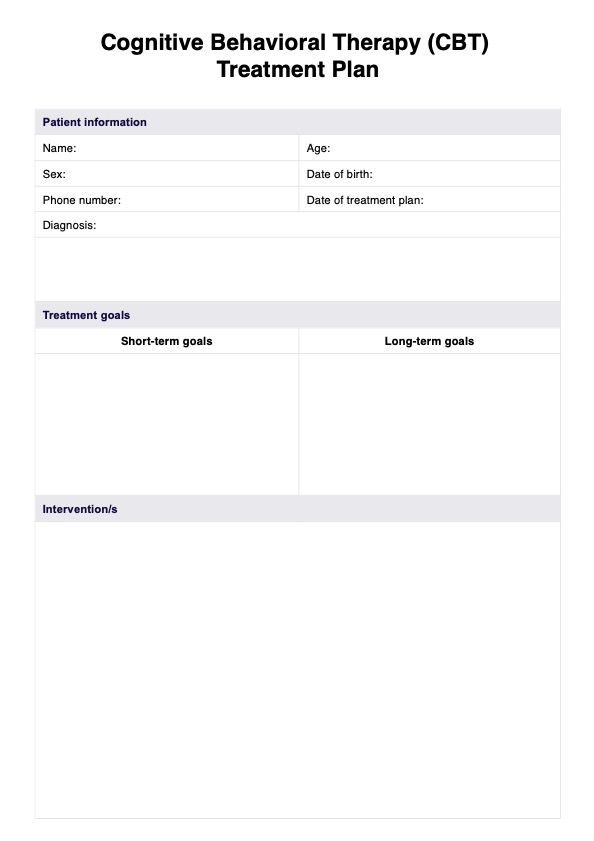CBT Treatment Plans are used when addressing mental health conditions like anxiety, depression, and other behavioral challenges.

CBT Treatment Plans
Download our free CBT Treatment Plan to streamline the process and provide better patient outcomes. Incorporate this resource into your toolkit today!
Use Template
CBT Treatment Plans Template
Commonly asked questions
They provide a structured, goal-oriented approach to identifying and changing unhelpful thought patterns and behaviors to address mental health disorders.
Individualizing ensures the plan addresses the client’s unique needs, goals, and circumstances for optimal outcomes.
EHR and practice management software
Get started for free
*No credit card required
Free
$0/usd
Unlimited clients
Telehealth
1GB of storage
Client portal text
Automated billing and online payments











